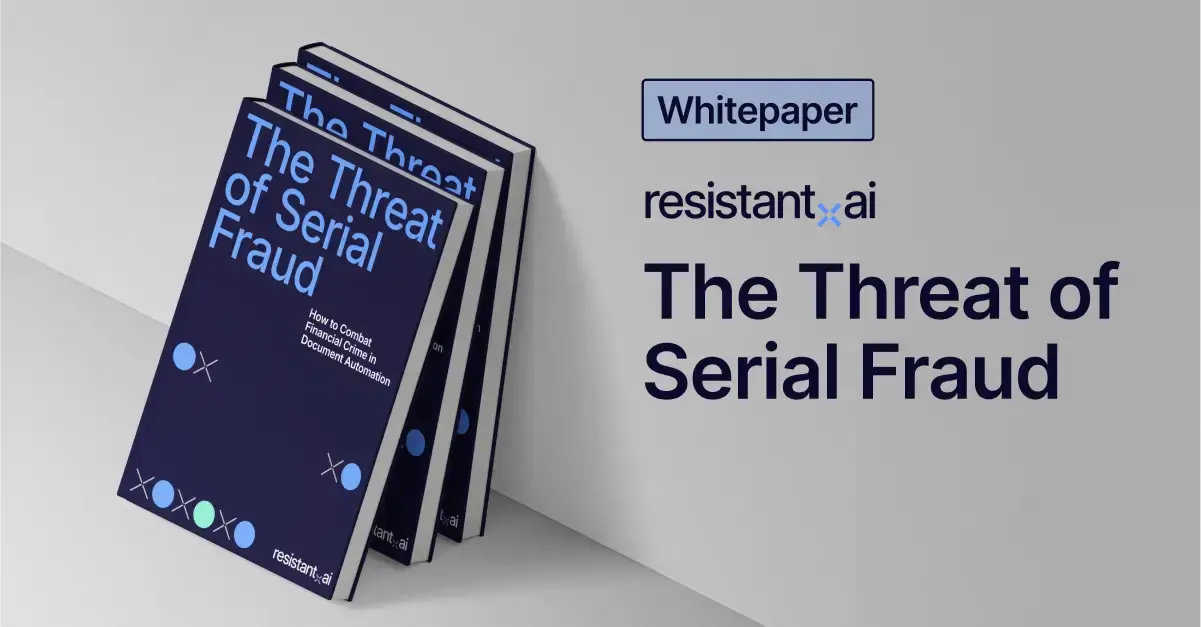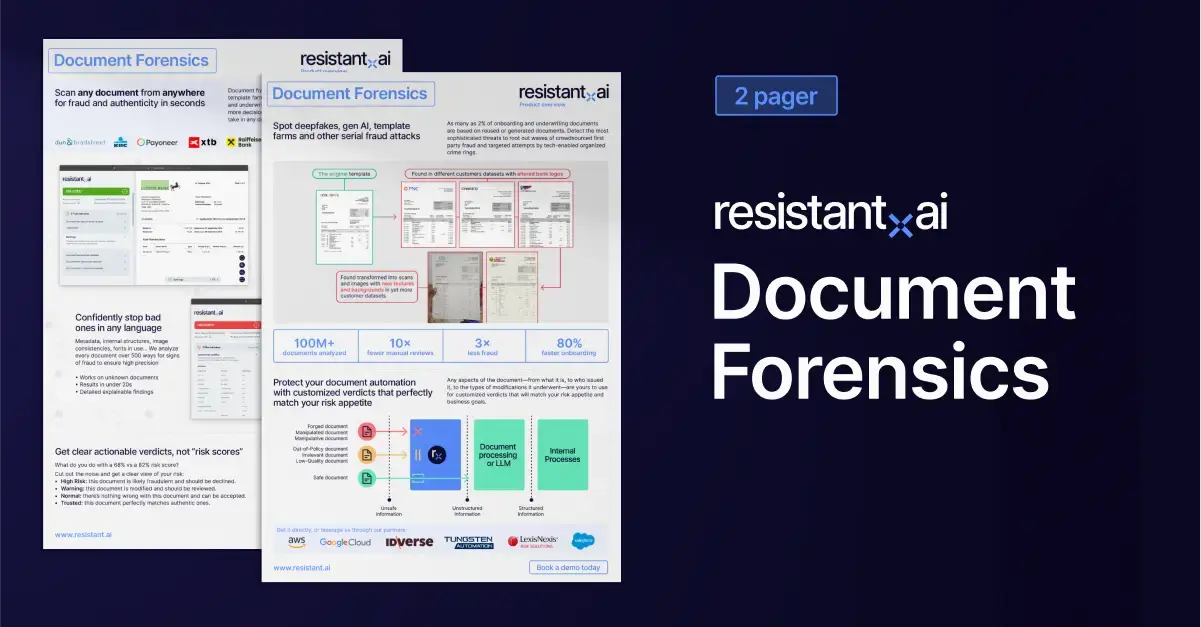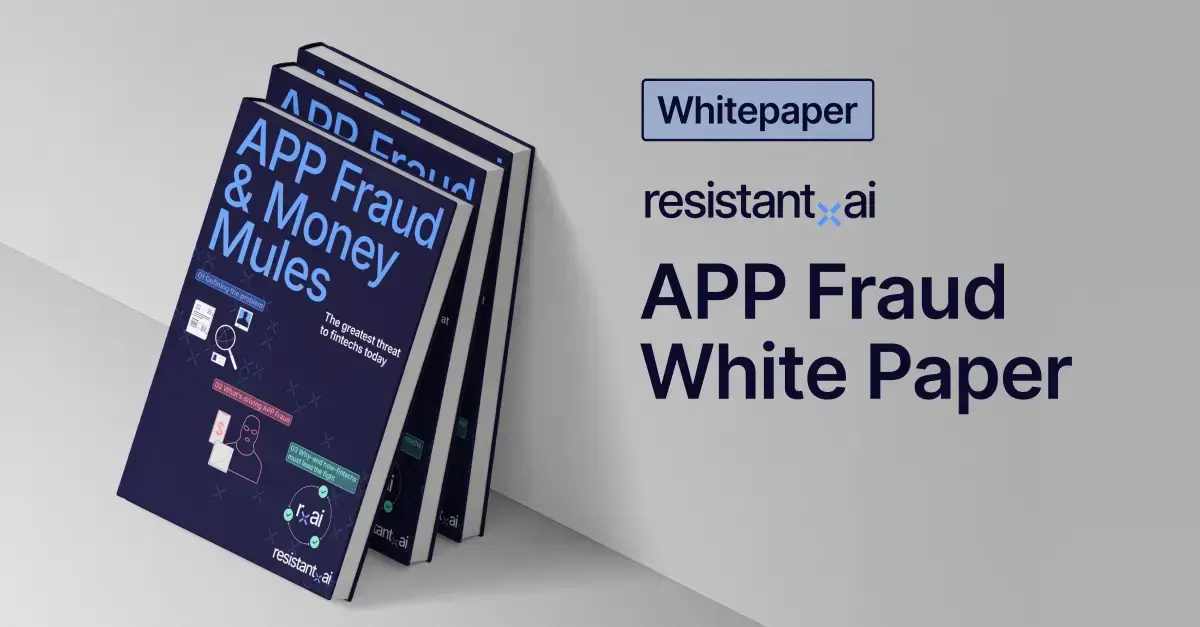
You might be interested in









AI-powered AML has its own jargon: our anti-money laundering bible will help you understand need-to-know terms from money mules to transaction monitoring.
A set of procedures, laws, or regulations designed to stop the practice of generating income through illegal actions.
A payment made at the request of the account holder where the funds are sent directly to another account, usually instantaneously. The rise of APP providers has made it faster and easier for bad actors to initiate scams and then quickly launder the proceeds.
A scam where victims are tricked into transferring money directly to a fraudster via an authorized push payment, usually continuing on to launder the funds via additional APP payments between money mules.
A 1970 US law aimed at preventing criminals from using financial institutions to hide or launder money and requiring financial institutions in the United States to assist US government agencies in detecting and preventing money laundering.
A person who helps to launder illegally obtained money, often on behalf of others, by receiving funds in their bank account then withdrawing that money as cash, which breaks the recorded trail of a money laundering scheme and makes the funds more difficult to recover.
The department or team in a financial institution typically tasked with overseeing anti-money laundering efforts and adherence to laws, regulations, guidelines, and specifications that mitigate other risks and forms of misconduct.
A digital or virtual form of currency that uses cryptography to make secure transactions over the internet, typically in a decentralized, peer-to-peer manner. Due to its decentralized nature and opposition to traditional financial entities (including regulators), "crypto" is a popular money laundering tool.
A process where relevant information about the customer is collected and evaluated for any potential risk for the organization, particularly past involvement in or risk of participation in money-laundering activities.
A more comprehensive set of procedures for managing risk, complying with regulations, and assessing money laundering potential, typically used for high-risk or high-net-worth customers.
A machine learning concept where multiple models are combined and overlap to accomplish a task. Using an ensemble of fraud detectors means that Resistant AI's fraud findings never rely on a single piece of evidence and multiple intersecting findings strengthen our overall confidence in labelling a document as fraudulent or trustworthy.
The ability for humans to clearly understand and act upon the output of a computerized system such as artificial intelligence. The outputs of computerized AML systems must be explainable (in natural language) so that analysts can use them effectively and regulators do not object to their use.
A transaction that is recognized as legitimate but is, in fact, suspicious.
A transaction that is flagged as suspicious or triggers an alert but is, in fact, legitimate.
A new instant payment service that the Federal Reserve Banks are developing to enable financial institutions of every size, and in every community across America, to provide safe and efficient instant payment services in real time.
A bureau of the US Department of the Treasury that collects and analyzes information about financial transactions in order to combat domestic and international money laundering, terrorist financing, and other financial crimes.
A combined approach to detecting and preventing closely fraud and money laundering activities, namely when fraud is a predicate offense to money laundering.
In Alert Prioritization, high-priority alerts indicate a great degree of confidence that an alert is a true positive actually consistent with money laundering or other suspicious activities and so should be investigated promptly.
The final stage in the money laundering process where the 'cleaned' money is mixed with legally obtained money.
The process of obscuring the origins of illicit money through a series of complex transactions or legal structures.
In Alert Prioritization, low-priority alerts indicate a small degree of likelihood that a transaction is a true positive actually consistent with money laundering or other suspicious activities.
In Alert Prioritization, lowest-priority alerts indicate little or no likelihood that an alert is a true positive actually consistent with money laundering or other suspicious activities.
A subset of artificial intelligence that involves the use of algorithms and statistical models to enable machines to improve their performance over time based on data.
In Alert Prioritization, medium-priority alerts indicate a that a transaction may be a true positive consistent with money laundering or other suspicious activities and should be investigated, though the severity of the alert or confidence in the assessment may not be as high.
The process of making illegally-gained proceeds appear legal by disguising the true origin of the funds.
A designated person within an organization who is responsible for overseeing the firm's compliance with anti-money laundering (AML) regulations and reporting any suspicious activity related to money laundering to the relevant authorities.
An individual who transfers money acquired illegally on behalf of others, typically disguised as legitimate payments. As such, money mules engage in money laundering, particularly in service of broader schemes such as APP fraud.
The stage in the money laundering process where illicit money is introduced into the financial system.
The proportion of true positive results (actual fraudulent transactions correctly identified as fraudulent) out of all positive results (true positives and false positives). High precision means a high proportion of relevant results with limited irrelevant results.
An individual who knowingly and for profit acts as a money mule for fraudsters, transferring illicit funds while attempting to avoid detection.
The process of identifying, assessing, and controlling threats to an organization's capital, earnings, growth, reputation, and other vital metrics. Defining acceptable money laundering risks and closing possible vectors for money laundering is key to risk management in fintechs.
The practice of circumventing the enforcement of penalties imposed by one or more countries against a targeted country, individual, or entity. Sanctions evasion can occur through various methods, such as using third parties, altering transaction patterns, or exploiting digital currencies.
Information required by regulatory entities to prevent money laundering, which details the origin of a person's wealth.
A data point that deviates significantly from the norm or average within a dataset or pattern, possibly indicative of fraud. Resistant AI's AML findings are based on statistical anomalies within normal or expected customer transaction behaviors.
A method of money laundering where large amounts of illicit money are broken down into smaller transactions to avoid detection or reporting.
A document that financial institutions must file with the Financial Crimes Enforcement Network (FinCEN) whenever there is a suspected case of money laundering, terrorist financing, or other financial crime.
A report made by a financial institution about suspicious or potentially suspicious activity, similar to a SAR but more directly related to the flow of funds.
A type of money mule where the mule's identity is synthetic rather than that of a real person. Synthetic money mules are increasingly being used as safe, easy-to-create money laundering networks as part of authorized push payment schemes.
The process of monitoring customer transactions, including assessing historical/current customer information and interactions, to identify and potentially prevent fraudulent activity.
A transaction that is recognized as legitimate and is, in fact, legitimate.
A transaction that is flagged as fraudulent or triggers an alert and is, in fact, suspicious.
A repeated money laundering technique or money flow pattern that can be categorized, modeled, and predicted as part of anti-money laundering efforts. Example typologies include cycling, split-merge, and clique trading.
 |
 |

